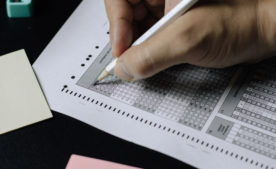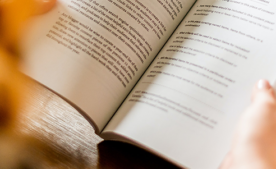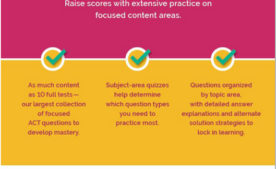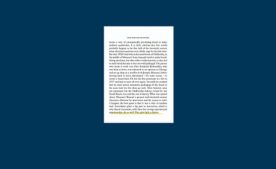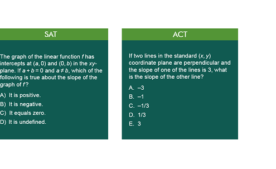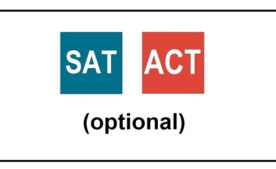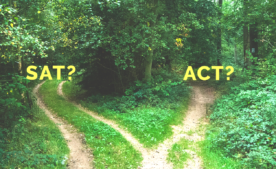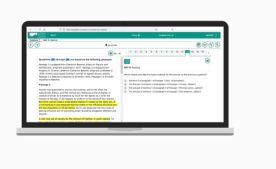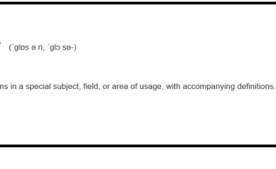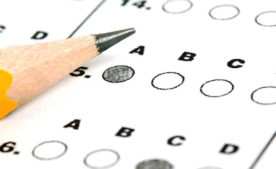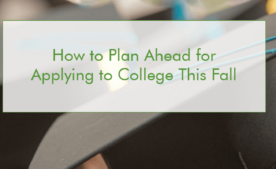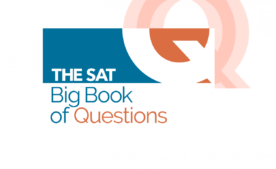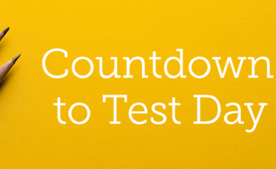Welcome to our series, What’s on the SAT. In this post, we’ll provide an overview of the SAT Reading test and share SAT Reading strategies you’ll learn and practice during your Summit tutoring program. If you are just starting out on the college admission process, please keep in mind that the best way to decide between the SAT and ACT is to take a practice test of each, then compare the scores and your test taking experience.
The SAT Reading section measures students’ reading comprehension skills. This requires students to understand what’s explicitly stated as well as draw conclusions based on what’s implied in a broad range of texts.
The Reading section is always first on the SAT. It’s 65 minutes long with 52 questions. Neither the questions or passages are presented in order of difficulty. There are five passages, each with 9-11 questions. One of those five passages will be a pair of shorter passages. Students have 13 minutes per passage, so we usually recommend spending about 5 minutes reading each passage and an average of 45 seconds answering each question. Keep in mind, though, that you may need more time for some questions than others. As part of your Summit tutoring program, you and your tutor will develop a personalized plan of attack that lets you make the most of the available time.
SAT READING PASSAGES
The passage types on the SAT Reading section are very consistent, though the order varies from test to test. You always get one passage from U.S. and World literature, two passages from science, and two passages from history or social studies.
The passage from U.S. or World literature is usually an excerpt taken from a novel, a short story, a memoir, or a personal essay. It might be classic or contemporary. Because these passages are excerpts, it may seem as if they are lacking context, but you are given enough information to answer all the questions.
Science passages are selected from accounts of historical discoveries and summaries of recent developments in Earth science, chemistry, physics, and biology. One of the two passages from the history or social studies category will be a historical text, taken either from a U.S. founding document or part of the “Great Global Conversation.”
Unlike on the SAT Writing & Language section, students need to read actively. Staying engaged can be a real challenge on the Reading section, but you can’t afford to lose focus. Your Summit tutor will help you develop techniques to confidently handle all of the different SAT Reading passages.
Thanks to the founding document/Great Global Conversation and U.S. and World Literature categories you will find that two fifths of your reading texts were written before this century (or maybe even before the last). Often students find these passages the most challenging. As part of your Summit program, however you’ll sharpen your skills and get comfortable with the level of paraphrasing required to succeed, even on the most difficult historical passages.
It’s important to keep in mind that the SAT is an objective, standardized test. Every question, no matter how subjective it may feel, has one right and three wrong answers. The SAT is not looking for the kind of deep literary analysis you might spend time on in English class. Your challenge is to find that correct answer and to eliminate the three that are wrong. If you’re torn between two answer choices, look for any detail, however technical or small it might seem, that will let you eliminate one of them. In your Summit tutoring program, you’ll gain the perspective to see these questions as black-and-white with one clear right answer. The correct answer has to be 100% right—and there is only one correct answer choice.
QUESTION TYPES
The questions fall into three main categories: Information & Ideas, Rhetoric, and Synthesis.
Questions from the Information & Ideas category require you to read and fully understand the passage. Some questions ask you about a detail or sequence of events from the passage. Others ask you to make an inference. Students often find the latter more challenging, as inference questions can feel more subjective. Remember that the SAT will never ask you to read minds or apply outside knowledge to the Reading section. Even inference questions must be based on evidence presented in the passage, although that evidence may be very subtle.
Rhetoric questions require the test-taker to consider the author’s perspective. How do they feel about the topic? And why did they write this piece—are they trying to convince us of something? Educate us? Share a personal experience? The questions might ask about the author’s point of view, why they chose a particular word, or how they structured their argument. Each paragraph has a purpose and plays a part in making the author’s point.
Synthesis questions tend to appear most often on the paired passage. These typically constitute more complicated versions of Rhetoric or Information & Ideas questions. For example, they may ask you to compare the two authors’ points of view. The Synthesis category also includes data graphics questions, which will ask the student to analyze the information from a chart or graph accompanying the passage.[/vc_column_text][vc_column_text css=”.vc_custom_1630433072102{margin-bottom: 0px !important;}”]
SAT READING STRATEGIES
Read Actively – Do your best to stay engaged with the passage, marking it up as you read. Look out for anything that seems like a topic sentence or a main point, and underline it. Think about the author’s perspective and how they structured the passage. Above all, stay focused and keep moving through the passage.
Read the Passage First, Just Once – We do not recommend reading the questions first. Trying to remember the questions as you read will just distract you. Instead, read the passage first, just once, at a good pace. Don’t get bogged down by unfamiliar words or unpronounceable names. Remember, you don’t have to memorize the passage. If you find yourself reading without taking it in, don’t backtrack—just keep going. You can come back to any parts you need to when you’re answering the questions.
Anticipate the Answer – The SAT includes “attractors,” plausible options meant to trap unsuspecting test-takers. On the Reading section, attractors often take the form of answers that are only mostly true. Anticipating the answer is a great way to avoid attractors: if you know what you’re looking for, you’re far less likely to fall for the trap—or talk yourself into an answer choice you wouldn’t have otherwise considered.
Read “Outside the Lines” – Any time a question directs you to a line or lines in the passage, be sure to also read a little above and below for context. Even though the question is pointing you to those lines, often the information you need is found either before or after those line numbers.
How the SAT Reading TEST Impacts Your SAT Score
The Reading section accounts for half of your Evidence-Based Reading and Writing Score (commonly known as your “verbal score”). The SAT Reading and SAT Writing & Language tests are weighted equally, even though Writing & Language is shorter and has fewer questions. If you are a strong reader, Reading would be a good section to target in increasing your SAT and super scores. If you find the Reading section especially challenging, don’t get discouraged: remember that you can compensate by working to improve your score on the Writing & Language section, which many students find more consistent and less challenging.
TAKE A FREE PRACTICE SAT
STUDENTS CAN TAKE OUR PROCTORED PRACTICE TESTS IN-PERSON OR REMOTELY.
As a complimentary service, Summit offers free proctored practice tests and a no obligation consultation to analyze the Score results in detail and provide guidance on your testing plan. Taking practice tests under realistic conditions gives students exposure to the test question types and pacing in a no-risk environment.
View the schedule



